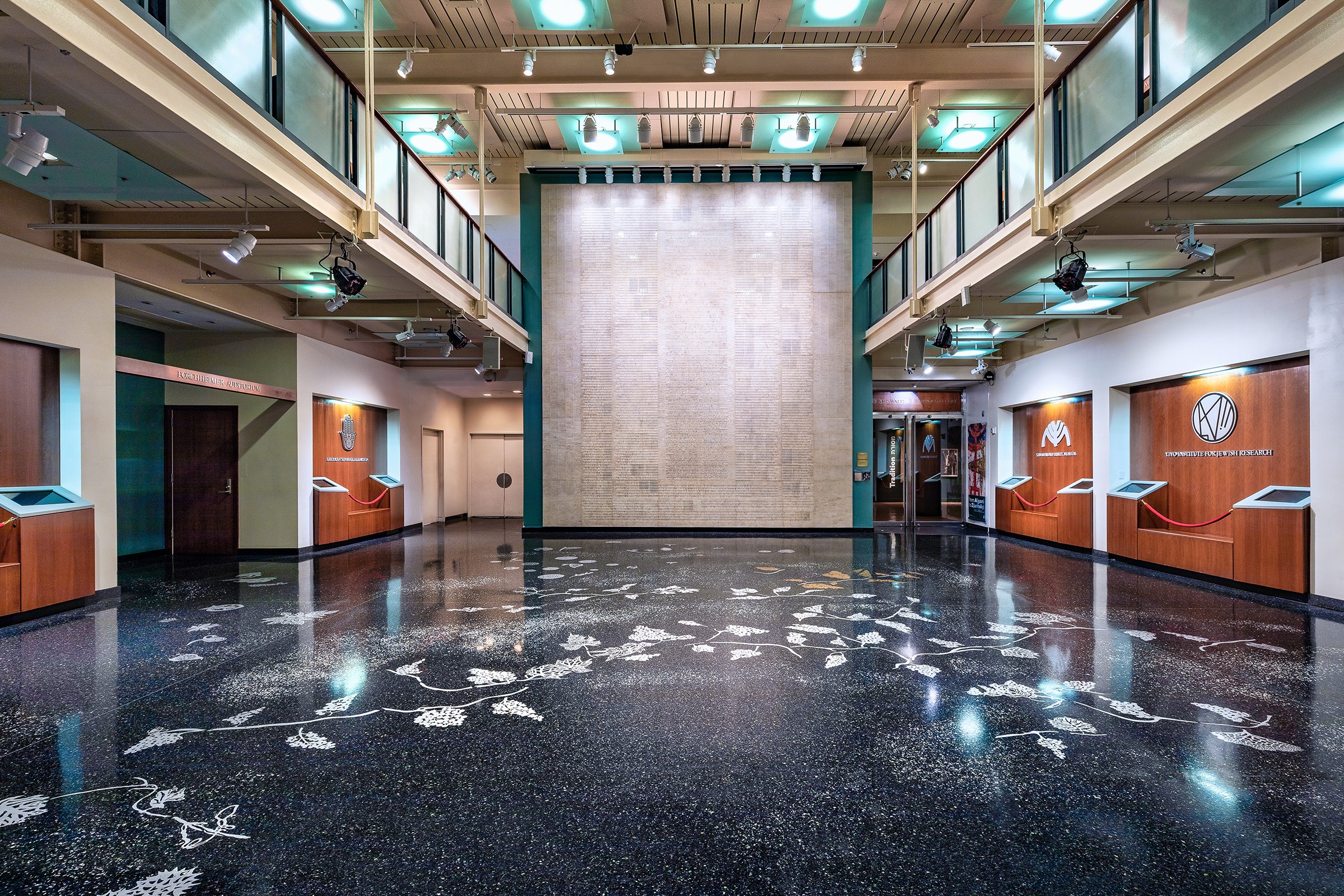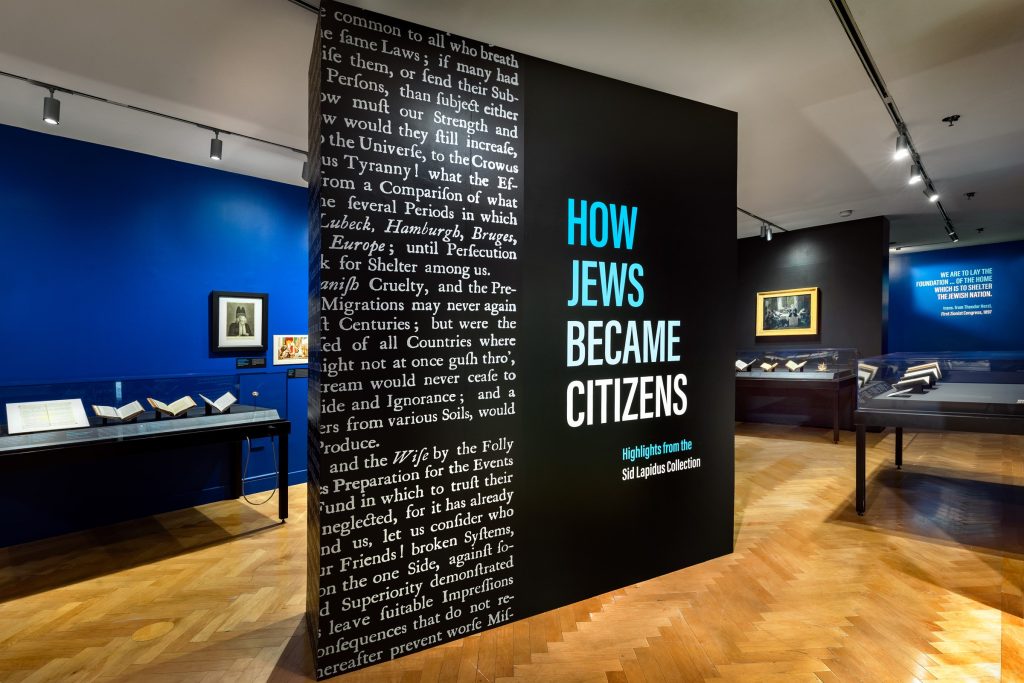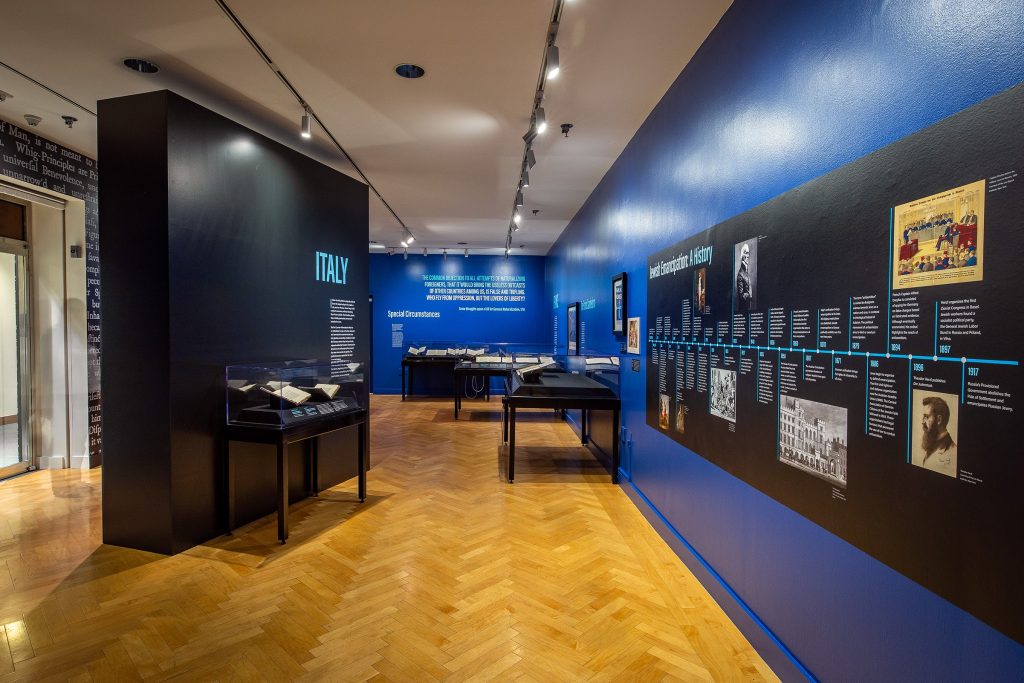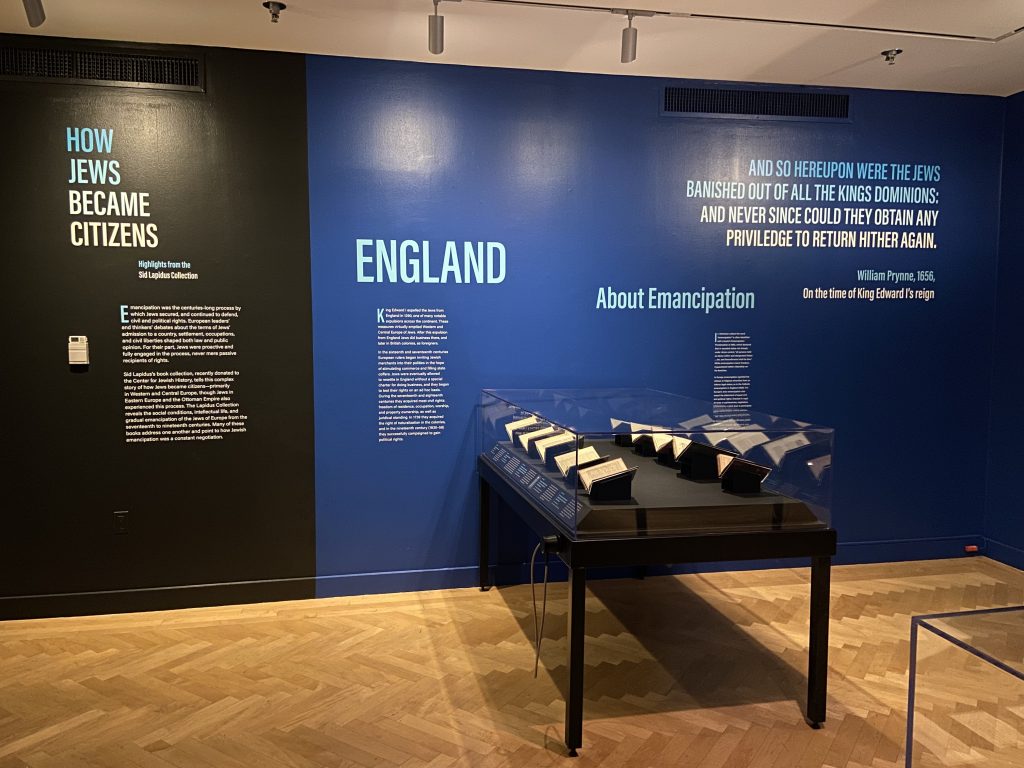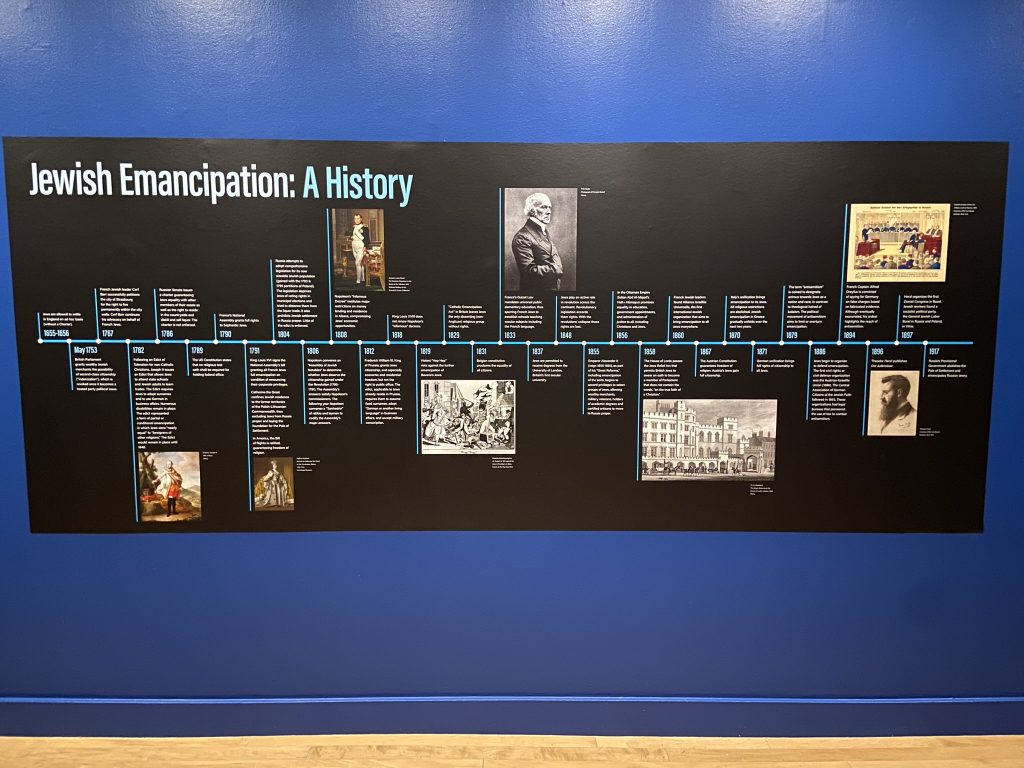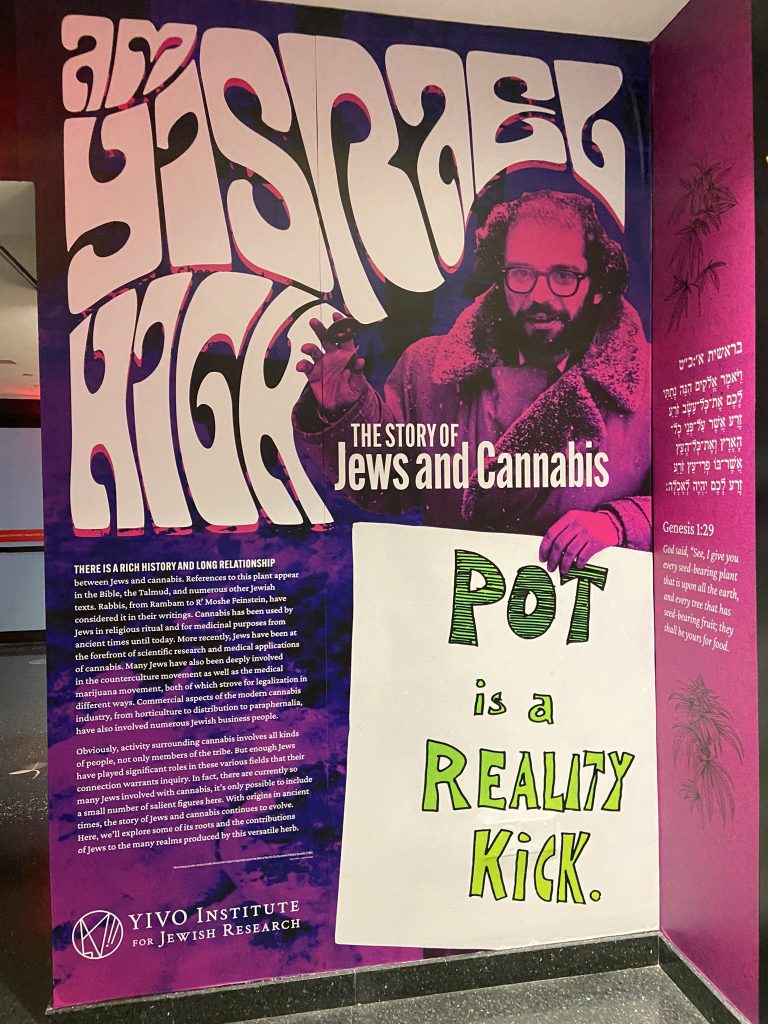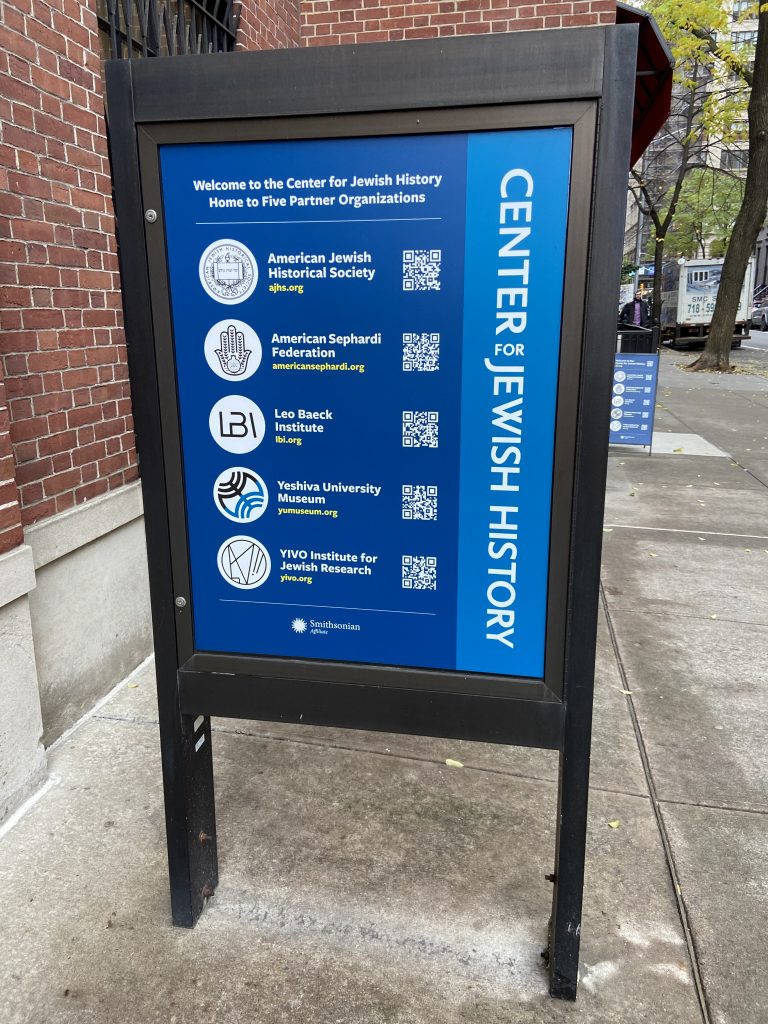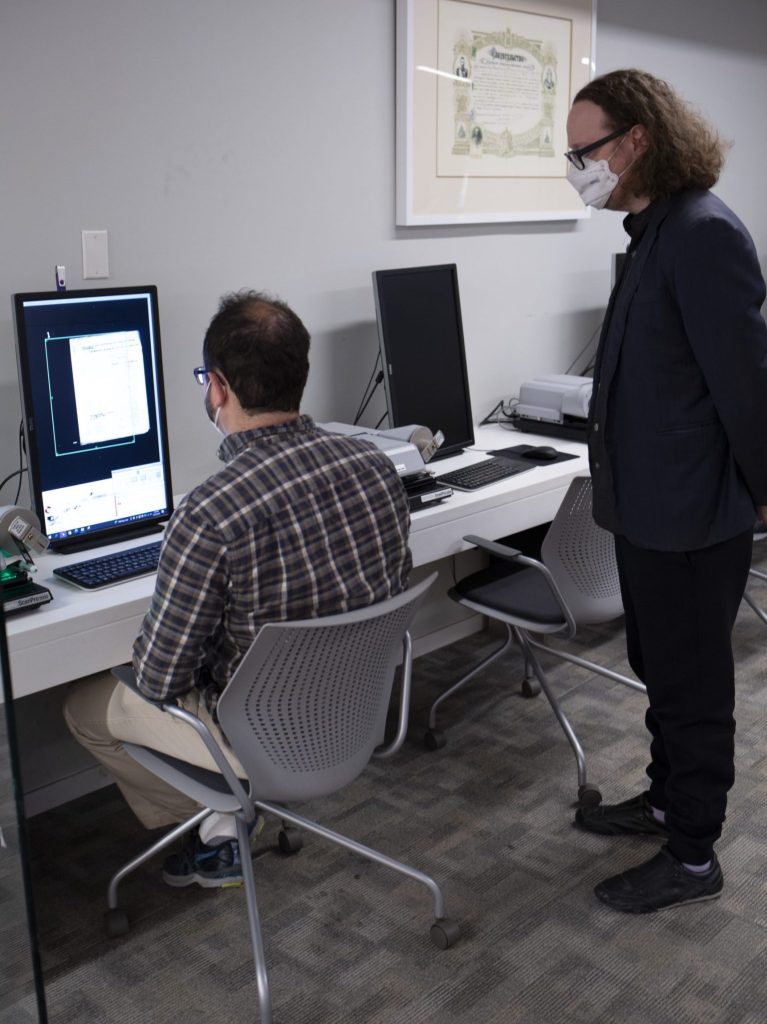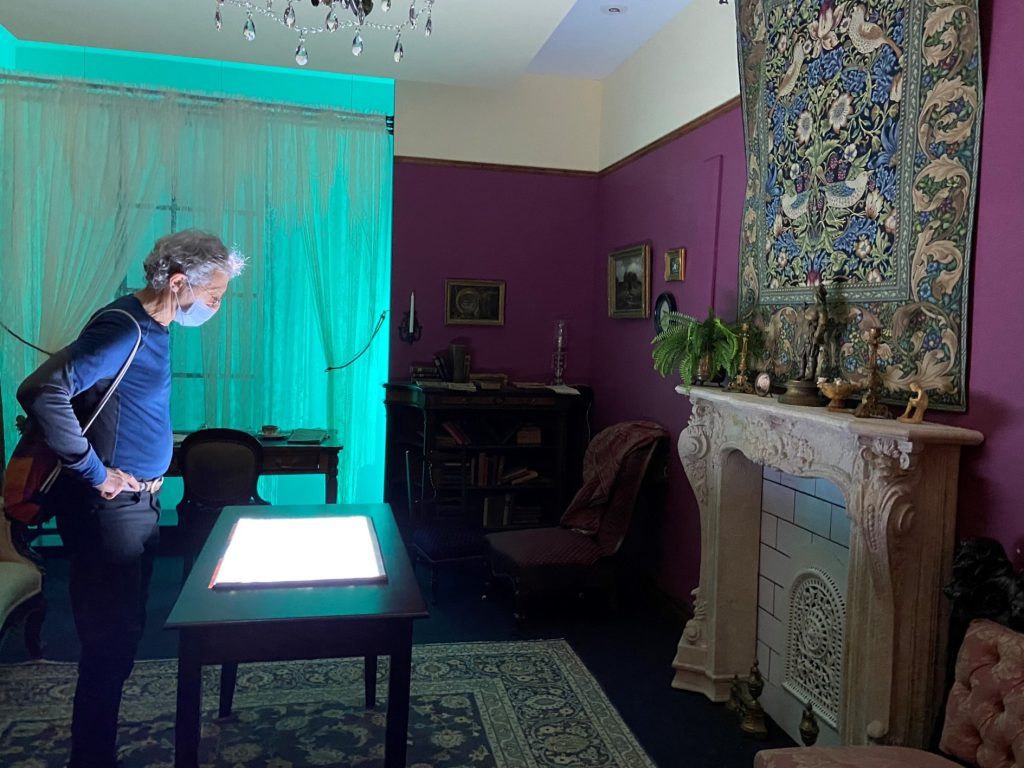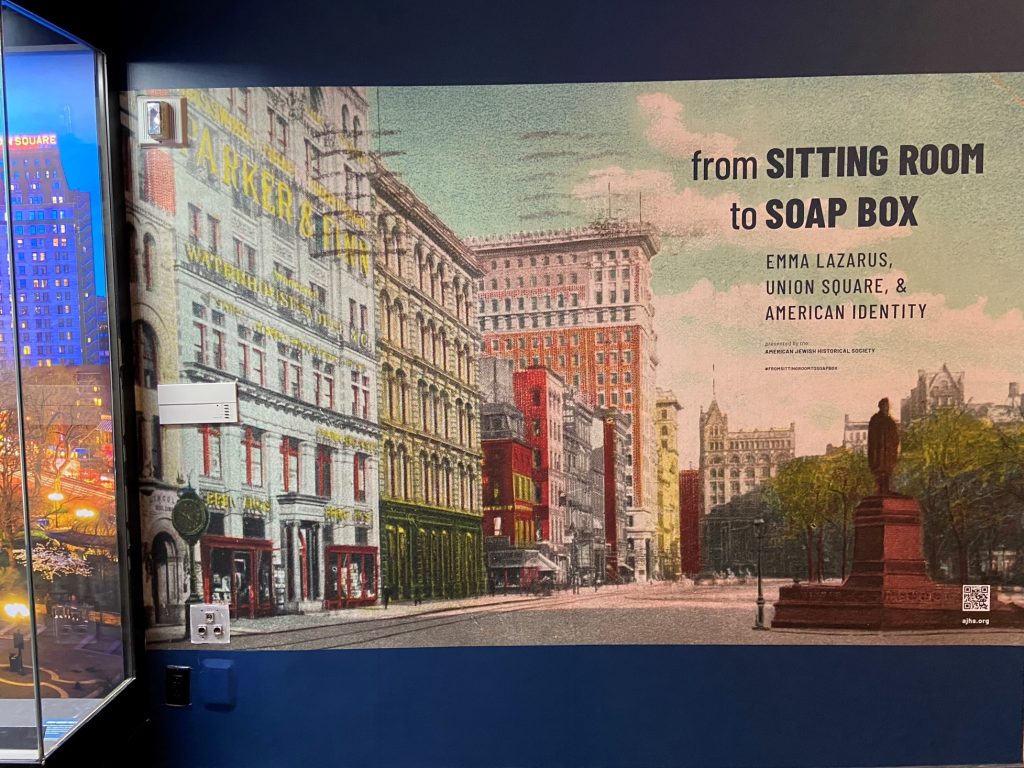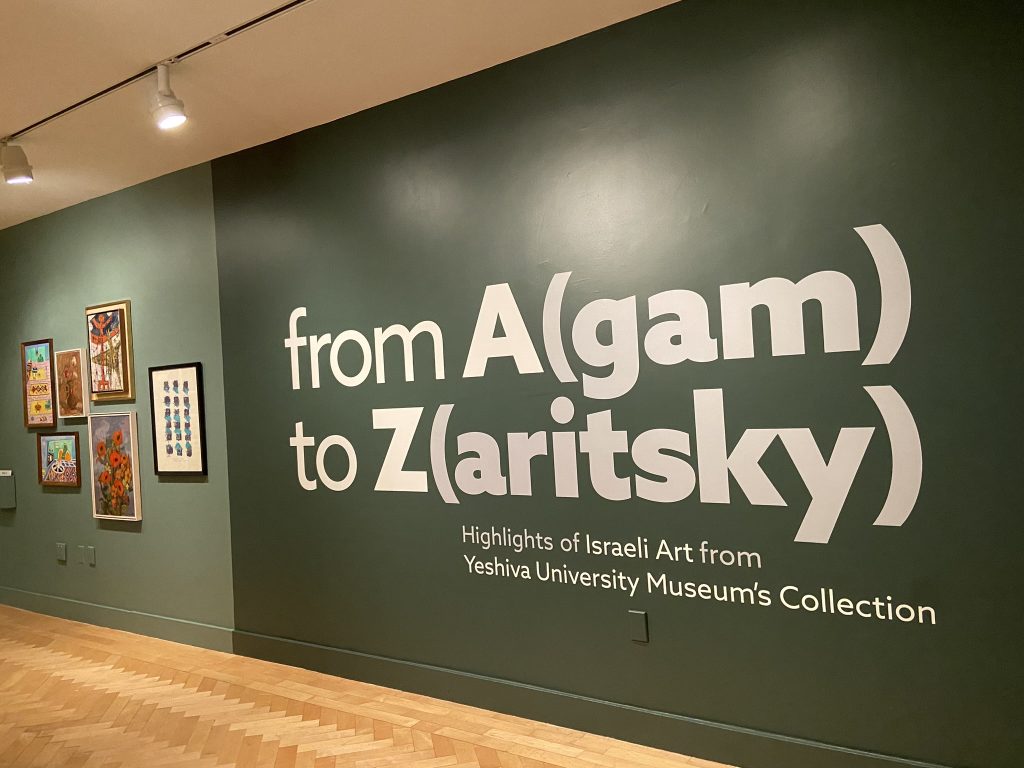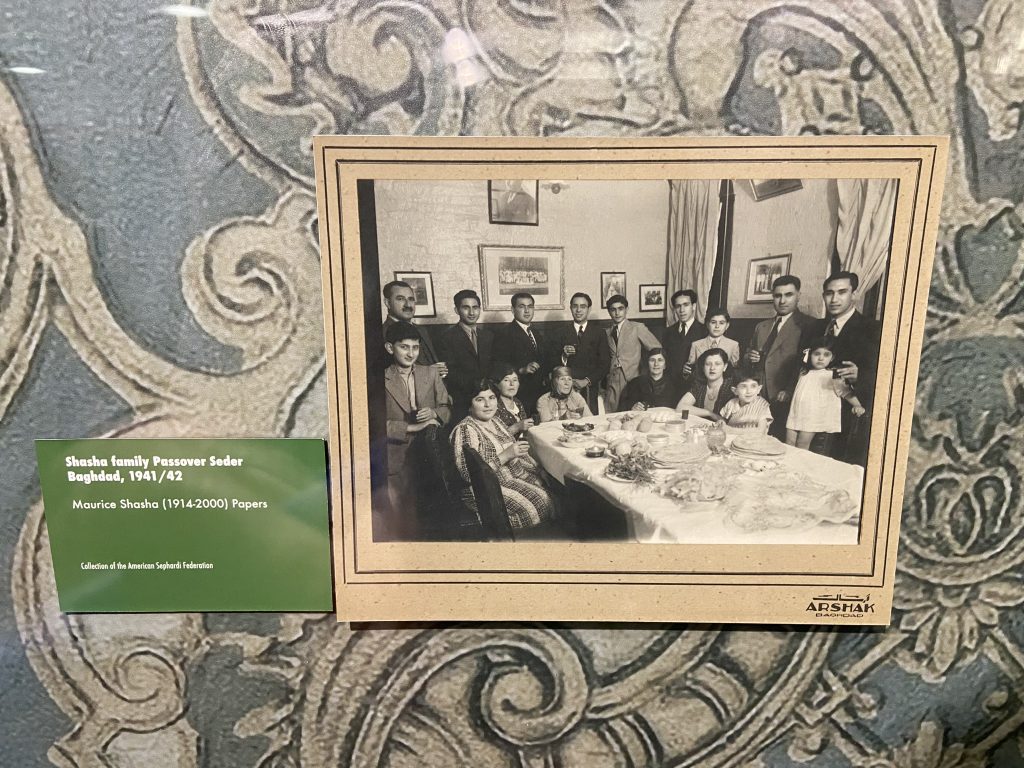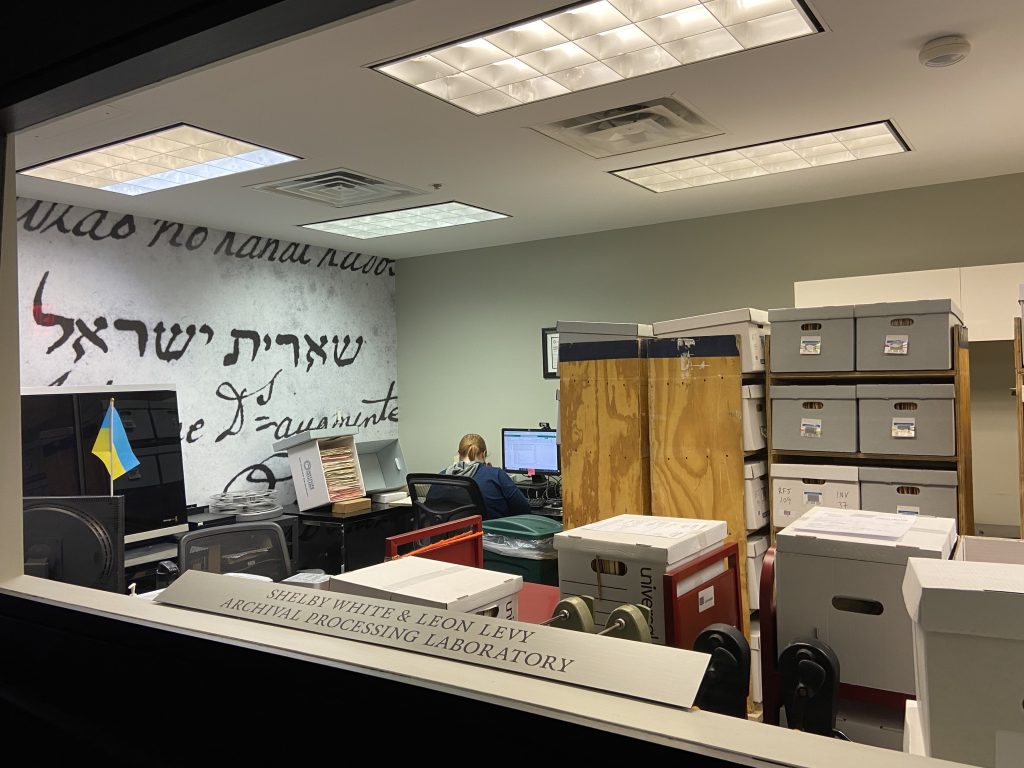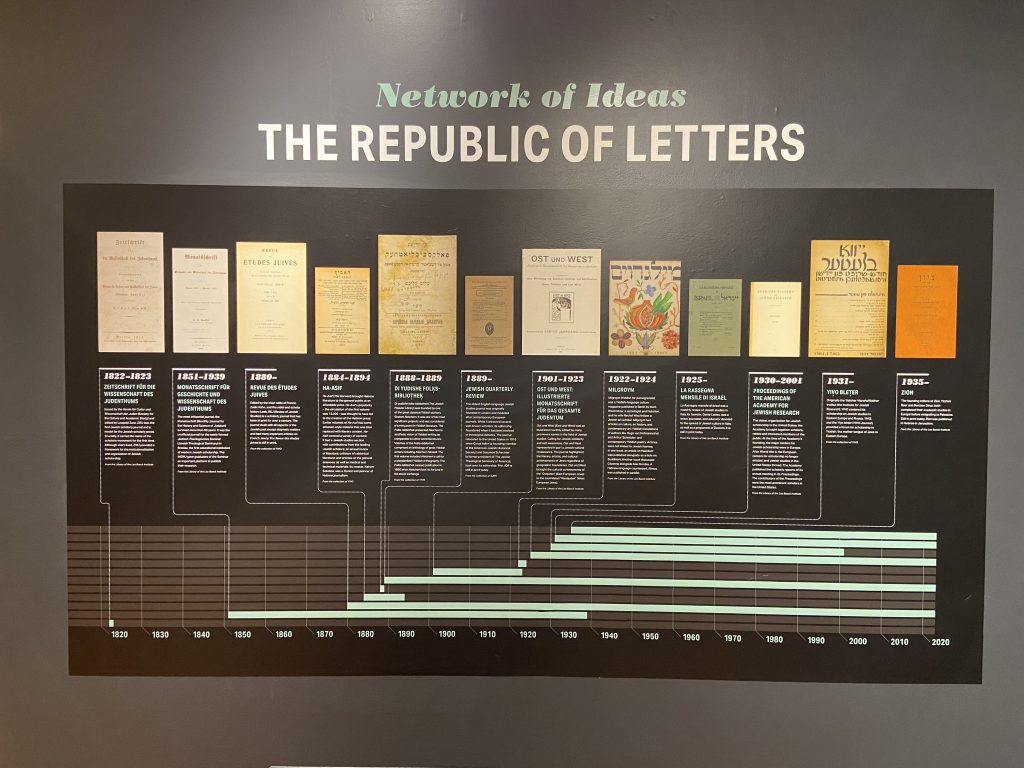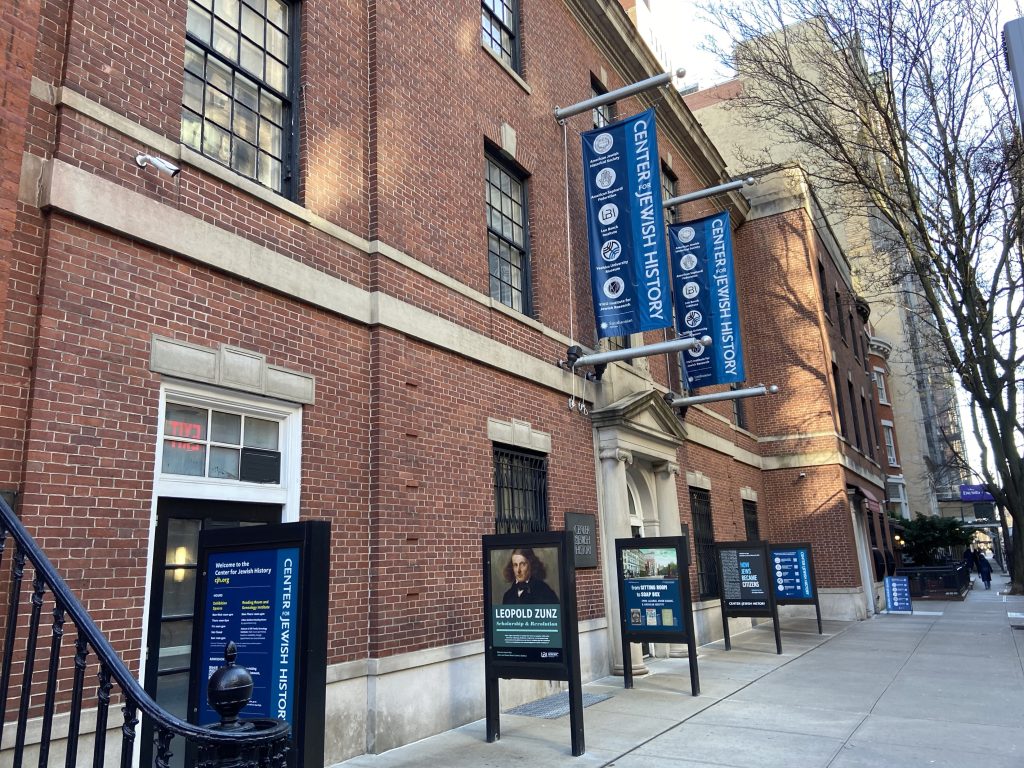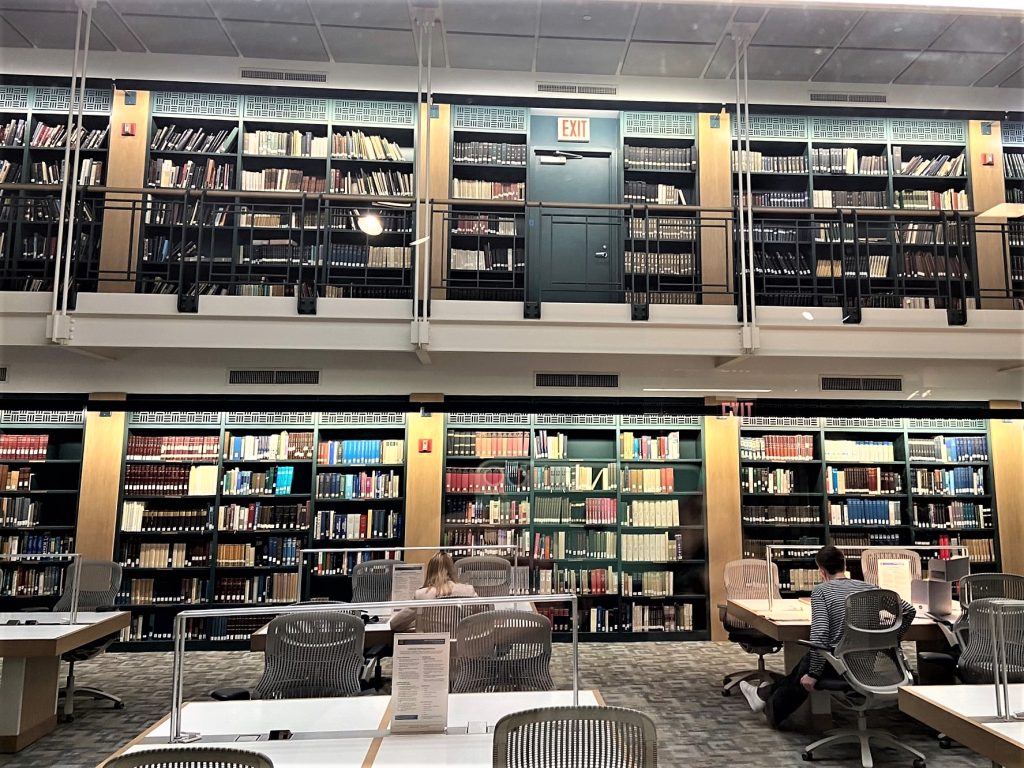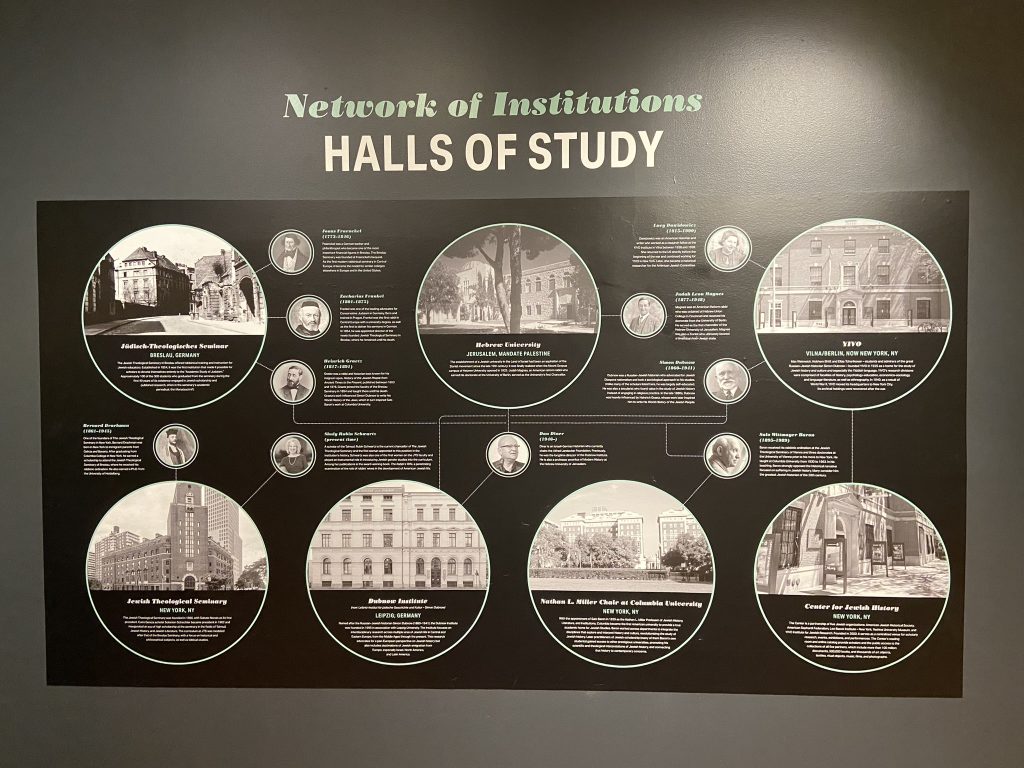In its building on West 16th Street in New York City, the Center for Jewish History provides a home for five partner organizations whose archives and collections constitute the largest record of the modern Jewish experience outside of Israel. Spanning centuries of history and culture, its holdings include 100 million documents and 500,000 volumes, along with thousands of pieces of art, photographs, recordings, and more. The Center, a distinguished research institution and a Smithsonian Institution affiliate, supports academic fellowships, symposia, and conferences. Its mission also encompasses increasing public access to archival material through its reading room and genealogical institute, and presenting exhibitions, programs, and events, both in person and online. The Center offers rich learning opportunities for Jews and non-Jews alike, and its goals seem increasingly timely in an era of cultural divisiveness and rising antisemitism.
Admission is free and includes changing exhibitions curated by the Center and its partners. Multiple shows are always on view in different galleries, and a look at some current and upcoming ones reveals that they cover the globe and topics from historic events to popular culture. From May 9 through December 2023, Yeshiva University Museum, a partner organization, will present The Golden Path: Maimonides Across Eight Centuries, with rare manuscripts and items from international lenders relating to Moses Maimonides (1138–1204), the influential physician, philosopher, and Torah scholar who lived in Spain, Morocco, and Egypt. How Jews Became Citizens: Highlights from the Sid Lapidus Collection, on display through February 2023, uses books from the Lapidus Collection to consider the gradual expansion of political, economic, and social rights for European Jews from the 17th to 19th centuries. On a different note, Am Yisrael High (through February 2023) explores the relationship of Jews and cannabis. The name is a play on Am Yisrael Chai (pronounced “High”), a phrase that means “The People of Israel Live.” Created by partner organization YIVO, this lively but serious exhibition examines references in the Torah and Talmud, the 1960s counterculture movement, and current scientific research on cannabis.
The Five Partners and the Center
In the late 1980s, Bruce Slovin, who was chair of YIVO Institute for Jewish Research, conceived the idea for bringing together organizations that focused on distinct aspects of Jewish scholarship, culture, and history. At that time, YIVO’s building on the Upper East Side was not adequate to conserve its collections properly; other Jewish institutions had various issues with their locations. The Center opened in 2000 in the renovated former home of the American Foundation for the Blind. With wide-ranging Jewish interests, the five partner organizations collaborate at the Center but maintain separate leadership and finances. Their individual websites and social media accounts give the fullest idea of their offerings for scholars and the public, including young people.
Established in 1892, the American Jewish Historical Society (AJHS) is the country’s oldest national ethnic cultural archive and a resource for research on the Jewish presence in America since 1654. Through scholarship and public (and online) programs and exhibitions, AJHS expands awareness of the country’s Jewish heritage. One of its greatest treasures is the handwritten original of “The New Colossus,” the sonnet by Jewish New Yorker Emma Lazarus written in 1883 for a fund-raiser for the Statue of Liberty. Two exhibitions at the Center (closing in June 2023), Emma’s Sitting Room and From Sitting Room to Soap Box: Emma Lazarus, Union Square, and American Identity, explore Lazarus’s involvement in the social issues of her day—such as immigration, race, and labor—and the role of New York’s Union Square as a space for activists.
Sephardim are Jews tracing their ancestry to Spain, Portugal, the Middle East, Africa, and Asia. The American Sephardi Federation (ASF) explores and helps preserve these distinctive cultures through exhibitions and programs. It also represents Sephardim in Jewish communal affairs in organizations such as the World Jewish Congress. The ASF supports the National Sephardic Library, research, and scholarship, and publishes online and print publications including The Sephardi Report.
In 1955, German-Jewish intellectuals including Martin Buber and Hannah Arendt founded the Leo Baeck Institute (LBI) to document the culturally rich world of German-speaking Jews that was almost destroyed in the Holocaust. Its research collection, covering centuries of Jewish life in Central Europe, comprises millions of pages of archival documents, 80,000 volumes, 25,000 photographs, and more. LBI also has an office in Berlin and a branch of its archives at the Jewish Museum Berlin. Its public offerings include programs and online resources such as a collections portal.
The Yeshiva University Museum (YUM), another partner, has collected more than 8,000 artifacts—artworks, textiles, Jewish ceremonial objects, manuscripts, and more—that reveal aspects of Jewish life over the centuries around the world. Its exhibitions and programs cover historical and contemporary themes: From A(gam) to Z(aritsky): Highlights of Israel Art from YU Museum’s Collection (closes February 10, 2023) examines the development of different artistic approaches in modern Israel. Yeshiva University, whose main campus is uptown in Washington Heights, comprises multiple schools and has more than 5,000 undergraduates.
YIVO Institute for Jewish Research (YIVO) fulfills its mission to study and share the culture and history of East European Jews through its multiple roles as an institution of higher learning and research, a library and archive, and an adult education and cultural organization. Founded in Europe and relocated in New York City in 1940, YIVO has the world’s largest collection of Yiddish-language books and newspapers. Its vast prewar archives and library are the only ones of their kind to survive the Holocaust. YIVO’s programs and famous Yiddish classes attract students from around the world; the website is an impressive resource, including the free online museum (launched in 2020) and Shine Online courses on subjects such as Jewish food and Yiddish theater.
Exploring the Center
Although changing exhibitions make up the core of the visiting experience, the Center has more to explore. The Great Hall, a courtyard in the building, contains permanent works of art: the towering Luminous Manuscript, by Diane Samuels, and Biblical Species, by Michele Oka Doner, a terrazzo floor with depictions of seven species the Torah mentions in the Promised Land. The public, researchers, and scholars can take advantage of the Lillian Goldman Reading Room (appointments recommended) and the Center’s vast library and archive collections and professional staff. The Ackman & Ziff Family Genealogy Institute (some walk-ins permitted; appointments recommended) utilizes the partners’ archives to assist researchers from beginners to scholars in exploring the past and reconnecting ancestors and living relatives. Librarians provide help and suggestions. The Center always has something new happening: The DNA Reunion Project, a pilot program that started in late 2022, permits Holocaust survivors or their children (who haven’t had their DNA tested) to apply for free DNA kits from a commercial company. It is hoped that the results will emphasize the value of DNA testing and yield information that can help families separated during World War II.
Side Dish
Exploring the Center works up an appetite, ideal for sampling Jewish food culture. Russ & Daughters Cafe on Orchard Street is part of an appetizing store (establishments that serve fish and dairy items) that started on the Lower East Side in 1914. A 2022 exhibition at the Center celebrated this beloved institution. At lunchtime, diners feast on smoked and cured salmon, whitefish, and herring, cream cheeses, bagels, knishes, and more. For a traditional Jewish deli, a place that focuses on meat, head to the Midtown location of the 2nd Avenue Deli for matzah ball soup—aka Jewish penicillin—or a stacked-high pastrami, corned beef, or brisket sandwich on rye bread.
Top Photo: The Great Hall displays Luminous Manuscript, by Diane Samuels, which has pieces of glass and stone tiles with alphabet characters, numerals, and children’s handprints. Biblical Species, by Michele Oka Doner, embeds depictions of seven biblical species in a terrazzo floor. Photo John Halpern, courtesy Center for Jewish History .
Linda Cabasin is a travel editor and writer who covered the globe at Fodor’s before taking up the freelance life. She’s a contributing editor at Fathom. Follow her on Instagram and Twitter at @lcabasin.

